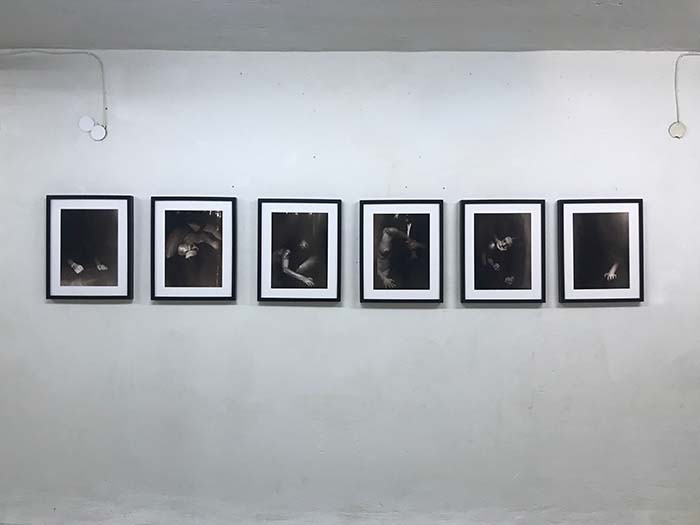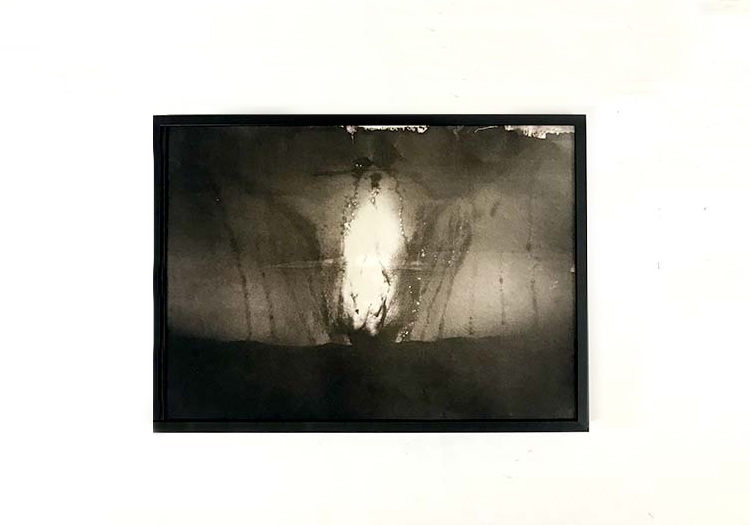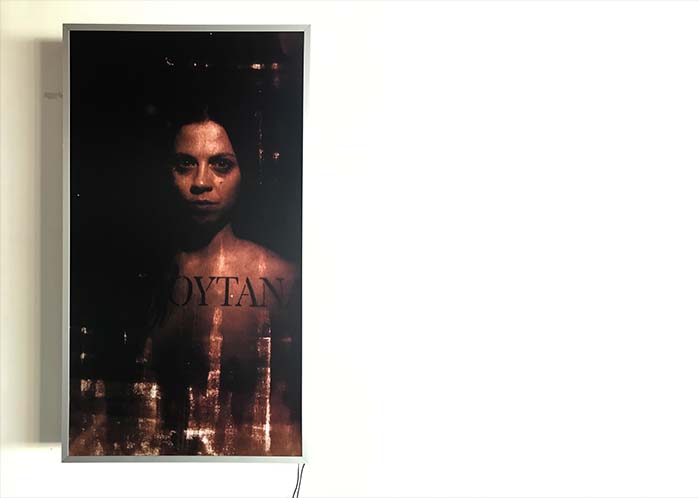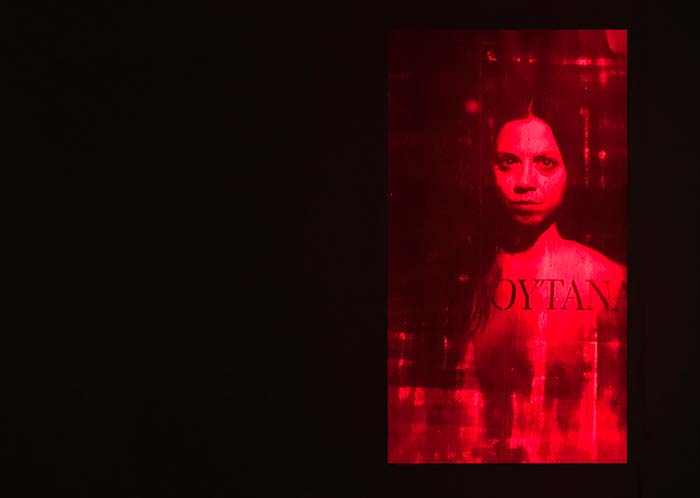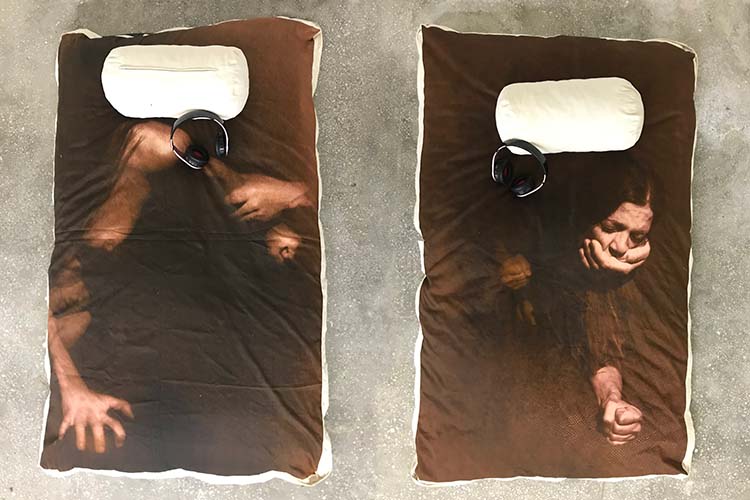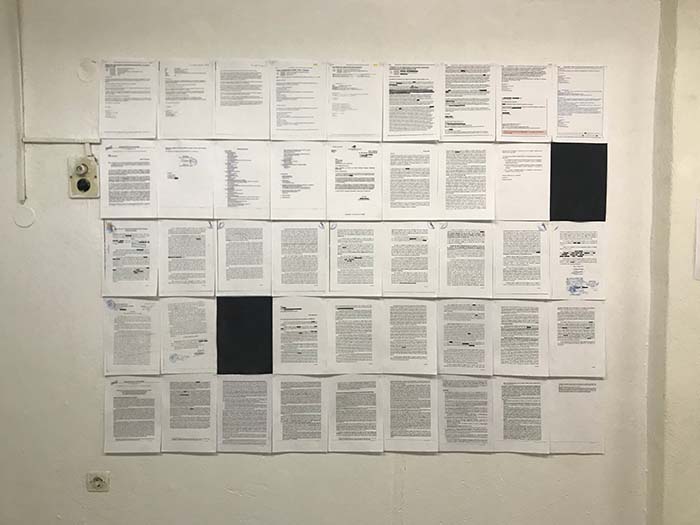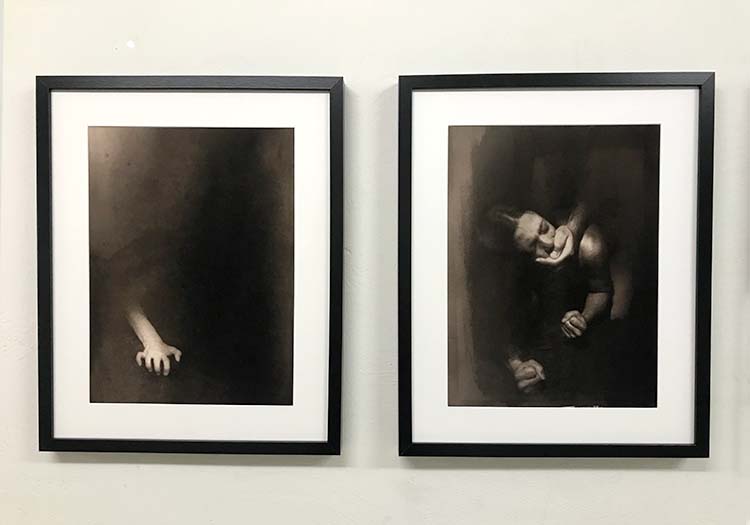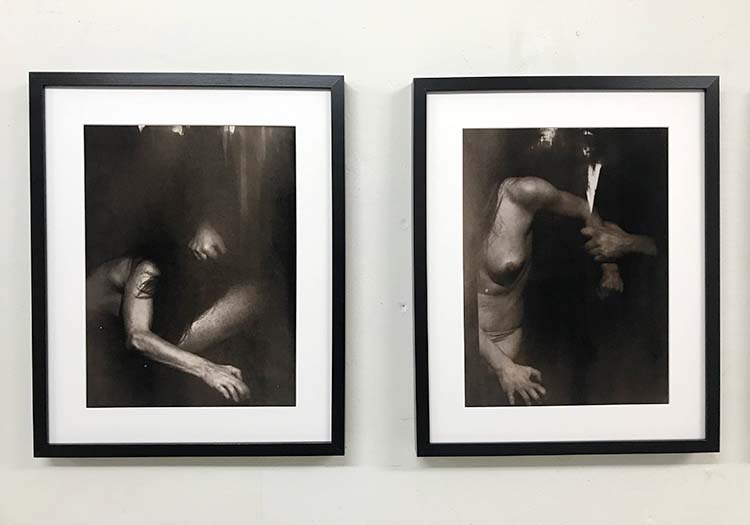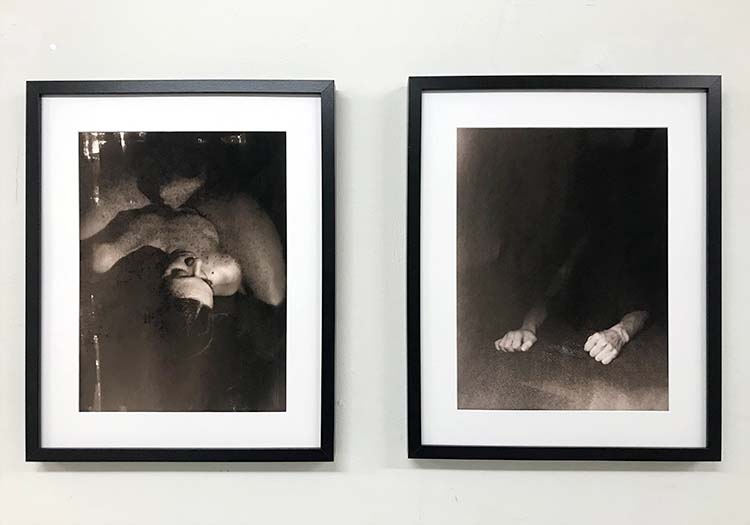Panorama of Cacotypes #1
Panorama of Cacotypes #1
Panorama of Cacotypes is based on my personal experience with sexual violence and research on systemic inequality in Greece. The installation raises questions about the credibility of the legal system in relation to the effects of sexual abuse and can be seen as a protest against the current law on sexual offenses and the lack of regulations regarding the handling of formal complaints.
The photographs have been created using the photographic technique of Calotype that was invented in 1839 by William Fox Talbot. The Calotype was the first method where negatives were used to create a positive image that was printed on photographic paper. This came from exposing the negative to light for a very long time. I chose to use UV light instead of sun light; it is known that ultraviolet light damages DNA and sterilizes surfaces with which it comes into contact. I used even longer exposure time that would make a lot of the details disappear; however, the main subject remained visible. The developing of the pictures was made with the use of harmful chemicals. All these formed a metaphor for the nature of Sexual Trauma.
The photographs are displayed in black frames with glasses in front. While viewing the pictures the spectator is watching his own image reflected on the glass. Although this might feel confronting to people, my intention is to arise awareness on the impact of sexual crimes and the role of society in it.
Next to the photographs, I am displaying archive material originating from the process of accusation I initiated against my rapist. The documents regard a period of one and a half year and manifest the deficiency and failing of the Greek legal system.
This work is realized with the indispensable help of my husband that was an important figure in the pictures, with the guidance of photographer Despina Papachristoudi and the assistance of the expert in analog photography Carolin Lange. They all understood the importance of the topic and my personal need to share this story with the World. They all created a safe space for me to develop the work. Panorama of Cacotypes is based on respect, love, discretion, courage, empowerment and critical thinking, and it is only through this base that one can reflect upon this work and understand it. This base is the only suitable foundation for recovery.
Photography assistance: Despina Papachristoudi, Carolin Lange
This project is realized also with the help of Mondriaan Fund
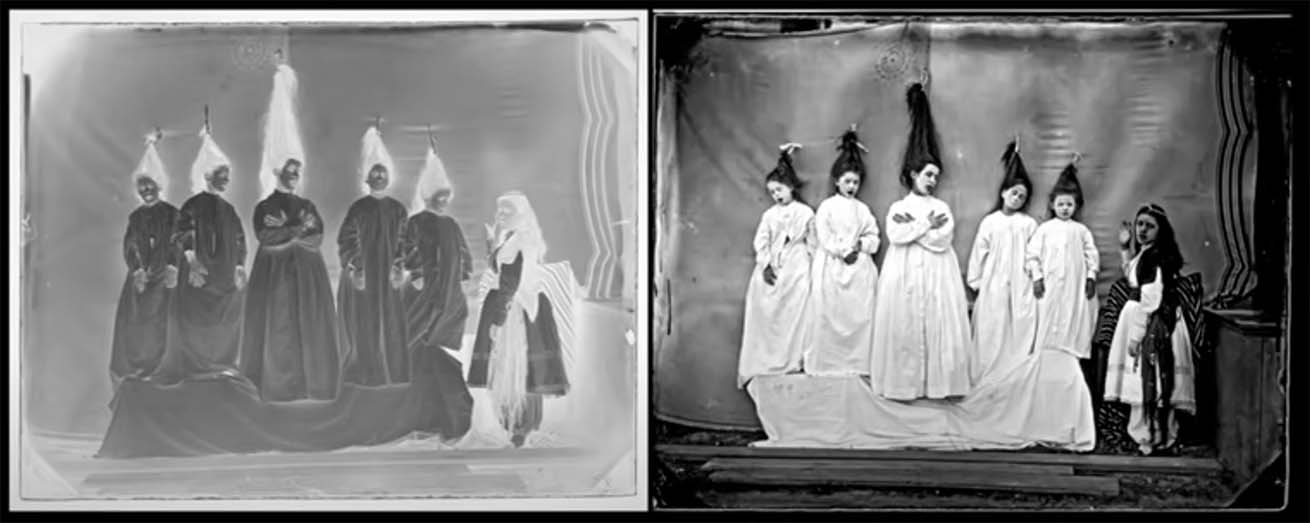
Talbot made his first successful camera photographs in 1835 using paper sensitised with silver chloride which darkened in proportion to its exposure to light. This early "photogenic drawing" process was a printing-out process, i.e., the paper had to be exposed in the camera until the image was fully visible. A very long exposure—typically an hour or more—was required to produce an acceptable negative. In late 1840, Talbot worked out a very different developing-out process (a concept pioneered by the daguerreotype process introduced in 1839), in which only an extremely faint or completely invisible latent image had to be produced in the camera, which could be done in a minute or two if the subject was in bright sunlight. The paper, shielded from further exposure to daylight, was then removed from the camera and the latent image was chemically developed into a fully visible image. This major improvement was introduced to the public as the calotype or talbotype process in 1841.
The light-sensitive silver halide in calotype paper was silver iodide, created by the reaction of silver nitrate with potassium iodide. The calotype process produced a translucent original negative image from which multiple positives could be made by contact printing. This gave it an important advantage over the daguerreotype process, which produced an opaque original positive that could be duplicated only by copying it with a camera. Talbot was the first to apply it to a paper-based process and to a negative-positive process, thereby pioneering the various developed-out negative-positive processes which have dominated non-electronic photography up to the present.
